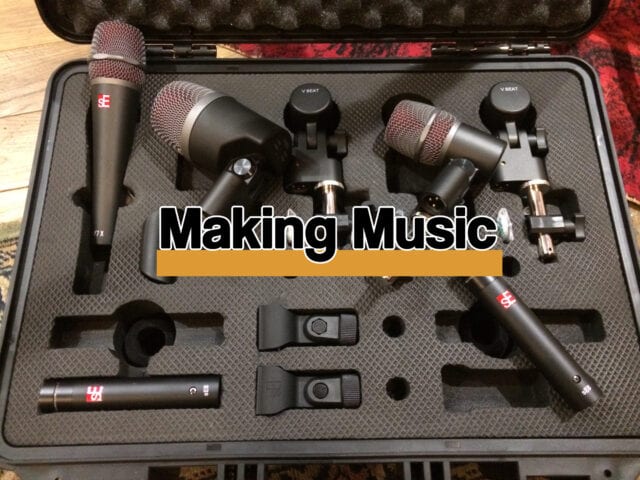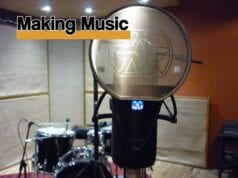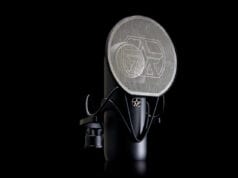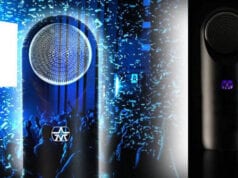Last Updated on April 3, 2022 by Andrew Culture
Manufacturer: sE Electronics
RRP (at time of publication) GB£899.99/US$999/EU€999
The idea of multiple microphones from the same manufacturer being made into a specialist pack is not a new one. It’s also a tricky path to tread as every engineer has their own favourite tried and tested mics, which means it’ll take something special to tempt them away.
Enter sE Electronics, who have been producing microphones and accessories for twenty years and are still a family-owned and run business. They also have the distinction of being the only microphone manufacturer to have the seal of approval of Rupert Neve no less, who has collaborated previously with the company on three other microphones.
Having sold single and matched pairs in the past (I’ve owned and used a matched pair of sE1-a mics for 15 years), the V Pack Arena is designed as a complete drum miking collection incorporating seven mics for kick, snare, toms and overheads. So far, so normal, when compared to similar kits from other manufacturers. What, I hear you ask, makes these any different? Well, read on…
Special Delivery
The V Pack Arena arrives in a sturdy, Peli-style case that, while it probably wouldn’t stand up to being run over by a truck, would certainly survive the rigours of being thrown into the back of one night after night. Inside, the mics are slotted into pre-cut spaces in the base and the lid is lined with foam to protect the mics. They are not in individual pouches themselves so if you’re thinking of ditching the case in favour of your own production box you might have to consider this.
The seven mics are made up of the V Kick, three V Beat for toms, a V7X for snare and two sE8 for overhead duties. There are also three V Clamps to attach the VBeat to their intended drum, standard clips for the sE8 and the V7X, foam windshields for the sE8 and a selection of spare stand adapters and washer-type-thingys in case you lose any or don’t have a thousand spares in the bottom of a case already.
The V Kick, V Beat and V7X all share some common characteristics; they all have a dynamic capsule, have a quoted frequency range of 30-19,000Hz except the V Kick which goes down to 20Hz and all have a super-cardioid polar pattern.

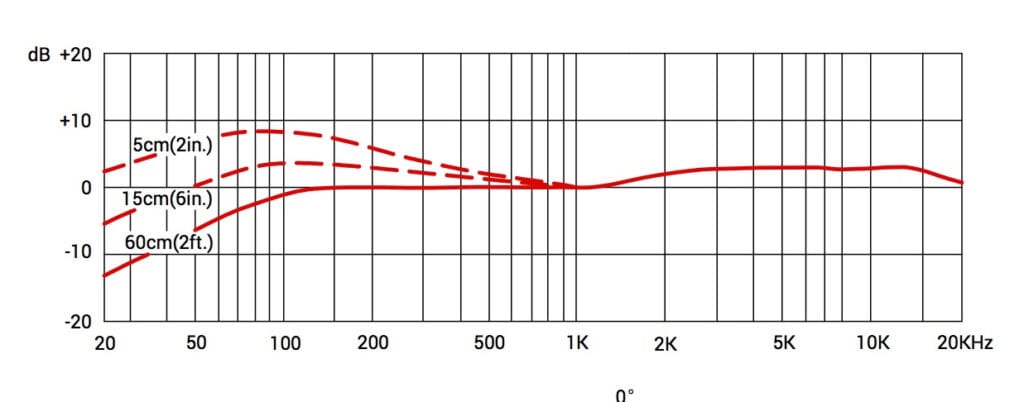
You would think that’s where the similarity ends, but a cursory glance at the polar plot and frequency response graphs shows that the V Beat and V7X are identical. Unscrewing the baskets reveals that they both have the same capsule with the body being the only difference. Indeed, the inclusion of the V7X as the snare microphone doesn’t reserve it specifically for that role and faced with a drum kit where there are difficulties placing a microphone stand anywhere near the snare, using the clip-on V Beat will give you the same sonic outcome.
Design and build
All of the microphones are really well built and have an air of assuredness while being handled; even the sE8 feels weighty and solid. The V Kick is, as you would expect, virtually bulletproof and the V Beat and V7X will stand up to being struck with a drummer’s stick on numerous occasions.
First (and lasting) impressions of the V Clamp system are really positive. This is the best clamp system I’ve used for tom and snare mics. The elastic clamp works in the same way as other manufacturers, stretching easily onto the drum’s rim, but it’s the adjustable rod and the microphone’s angle adjuster that is the star of the show. This combination means that you can more accurately position the mic on the drum and the securing mechanism on the rod and swivel mount almost give you physical feedback to let you know when it’s tight enough. It’s similar to the centre detent on a mixer’s pan or EQ section that you can feel through your fingers. I’m fairly sure that these things are not going to fall foul to over-tightening. Brilliant!
Another massive benefit of the design of the V Beat is the position of the XLR connector. As it is at the bottom of the base, next to the clip/mic stand mount, it keeps the XLR cable well out of the way of cymbals and makes the mic very compact overall.

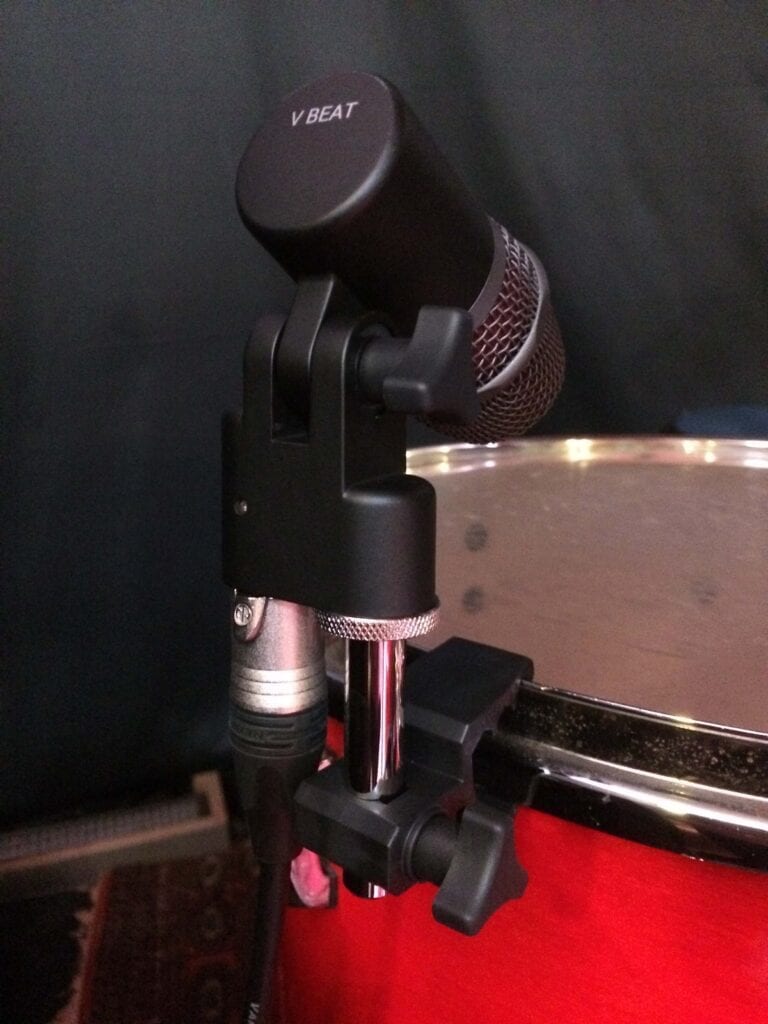
The V Kick also has some tricks up its sleeve. Along with the rear-exit XLR connector, there are 2 small, recessed switches that can give different voicings to the mic, dependent on your requirements. Used in different combinations they can change the frequency response in the mid and high ranges, allowing you to tailor the sound before having to reach for the EQ on your desk.

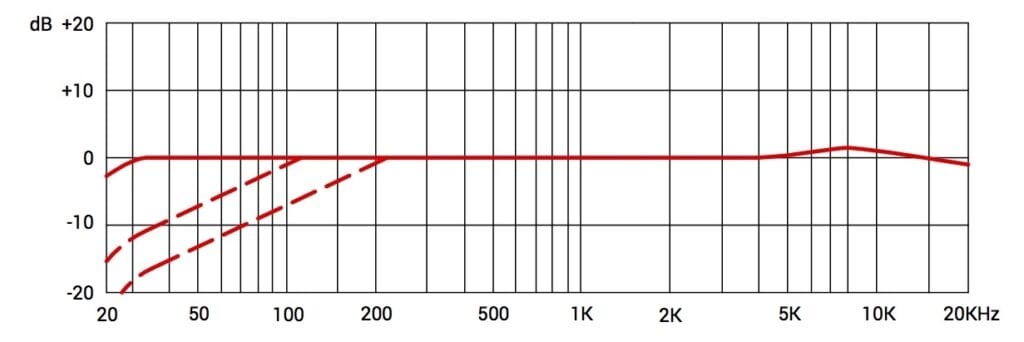
The sE8 are small-diaphragm condenser mics, with a cardioid polar pattern and need +48v phantom power to operate. They are also fitted with a pair of recessed switches, one as an attenuator reducing by 10 or 20dB and the other as a low-cut filter operating at either 80 or 160Hz. With the 20dB pad in, the mic can handle a maximum of 159dBSPL, which is some going for a SDC and especially useful for giving plenty of clean signal on particularly loud stages.
In use
My first few experiences with these mics were in a live sound setting in my role as house engineer for a venue of 80-capacity and another one-off gig in a 200-cap room.
The sound quality of both the V7X and the V Beat was clean and transients are handled well. The super-cardioid pattern is excellent at reducing spill, particularly hi-hat in the snare mic as long as it’s placed appropriately. Neither microphone exhibits that hi-mid bite of something like an SM57 and seems much more behaved in that frequency range. The sounds sat well in the mix with little EQ needed to help this happen. Being super-cardioid they exhibit a proximity effect and this really rounded out the low-mids of both snares and toms without sounding too flabby and added to the punch of the transients.

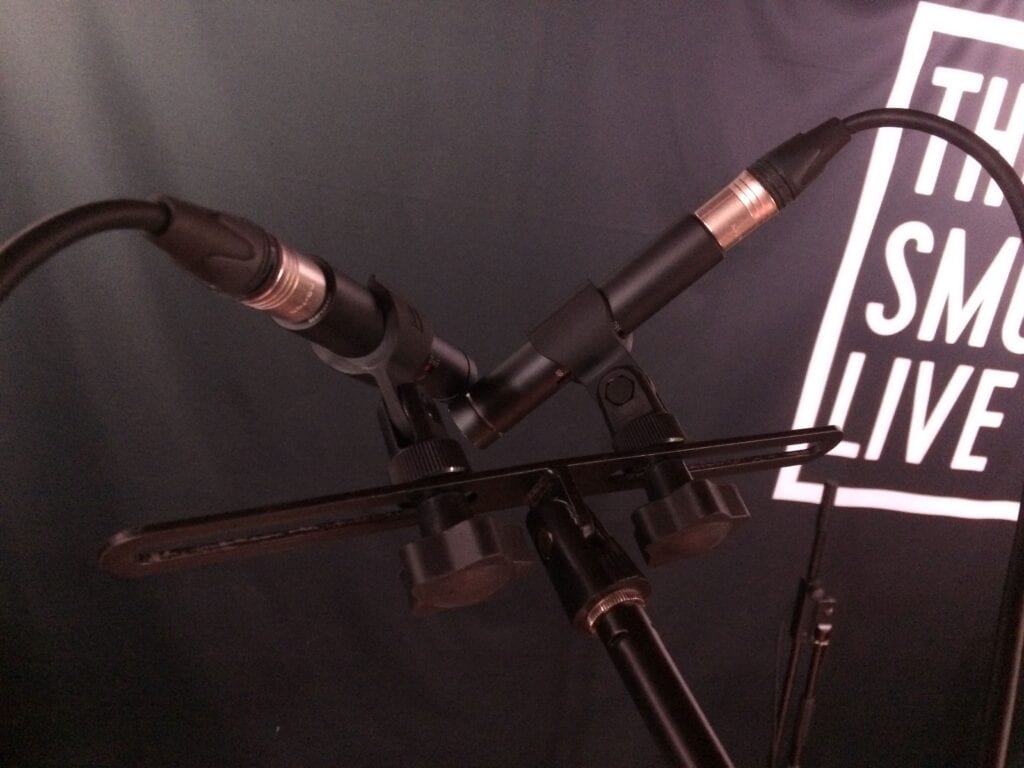
The sE8 was used in a couple of different configurations, both as a X/Y pair and as a spaced pair in the larger venue. In the 80-cap venue, it was more difficult to judge their handling of the stage sound as we use very little of the overhead sound in the front of house system, but the spaced pair gave a great performance in the larger room as well as on the subsequent mix of the recording of that night. The overhead’s sound was crisp without being harsh and the coverage over the kit was spacious. Loud sounds were also handled well without the need for the pad to be engaged. The recorded sound showed that the stereo picture wasn’t obviously compromised by the “hole-in-the-middle” that you sometimes get with spaced pairs.
The V Kick, on the other hand, didn’t play quite so nicely on these early outings for me. I’ll hold my hands up and admit that it probably wasn’t a fair test (and this was proved when I got the mics into a studio. See below) but where the rest of the microphones were very immediate in getting the right sound quickly, the kick threw me.

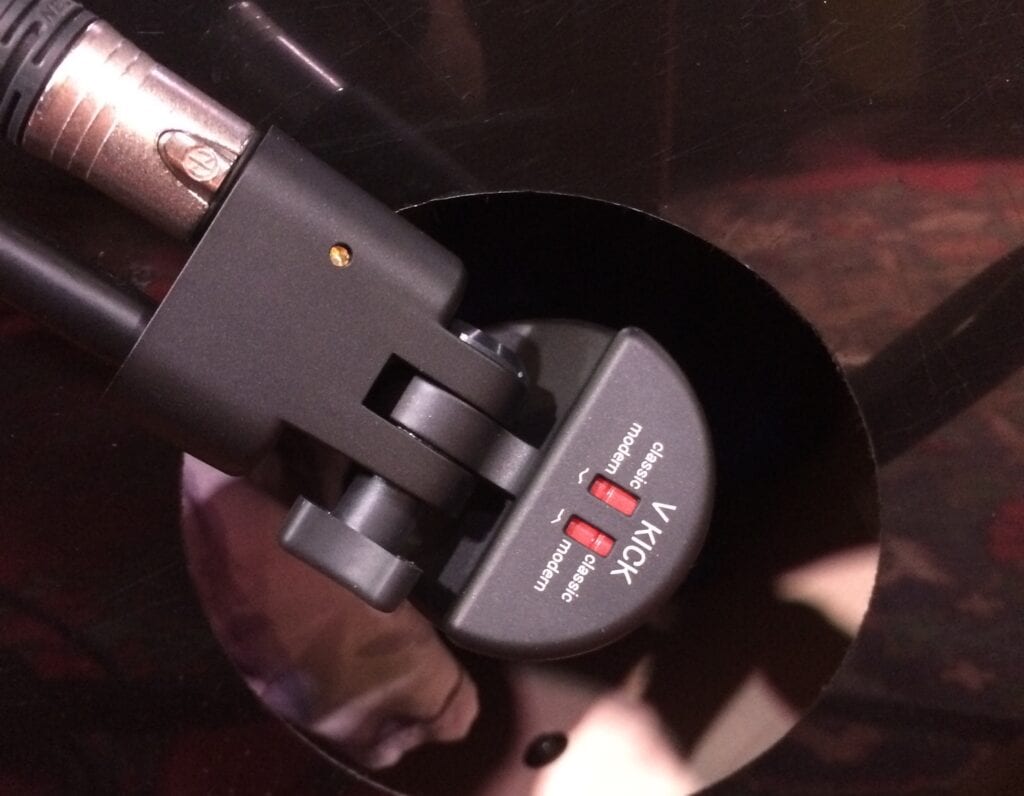
If, like me, you work in a venue where soundcheck time is at a premium and, whether it’s because of bands arriving late, kit sharing issues or general milling about, the time is even shorter in reality. So, on the first attempt with the V Kick I had about an hour for the headline act to get in, set up, get sound checked, and then line check the first band on before doors opened. I was up against it.
Normally my goto kick microphone is the Audix D6 as it really is one of those mics that you put in the right place and it just gets on with its job. This wasn’t the case with the V Kick. Leaving both the switches in the Classic position, the mic felt really boomy and uncontrolled. Admittedly the room does have a certain frequency that excites easier than others, but even with EQ I couldn’t get the mic to behave. Trying to switch the voicings didn’t help either and as I was up against it time-wise, I had to reach for the D6 and got on with the night.
The next time I tried the mic was in the 200-cap venue where I presumed it would have a bit more free air to work with due to the size of the room. This time, weirdly, I could hardly get any low end out of it at all! This was getting strange, but again as time was of the essence the D6 came out and I put the problem down to a faulty mic that needed more investigation.
In the studio

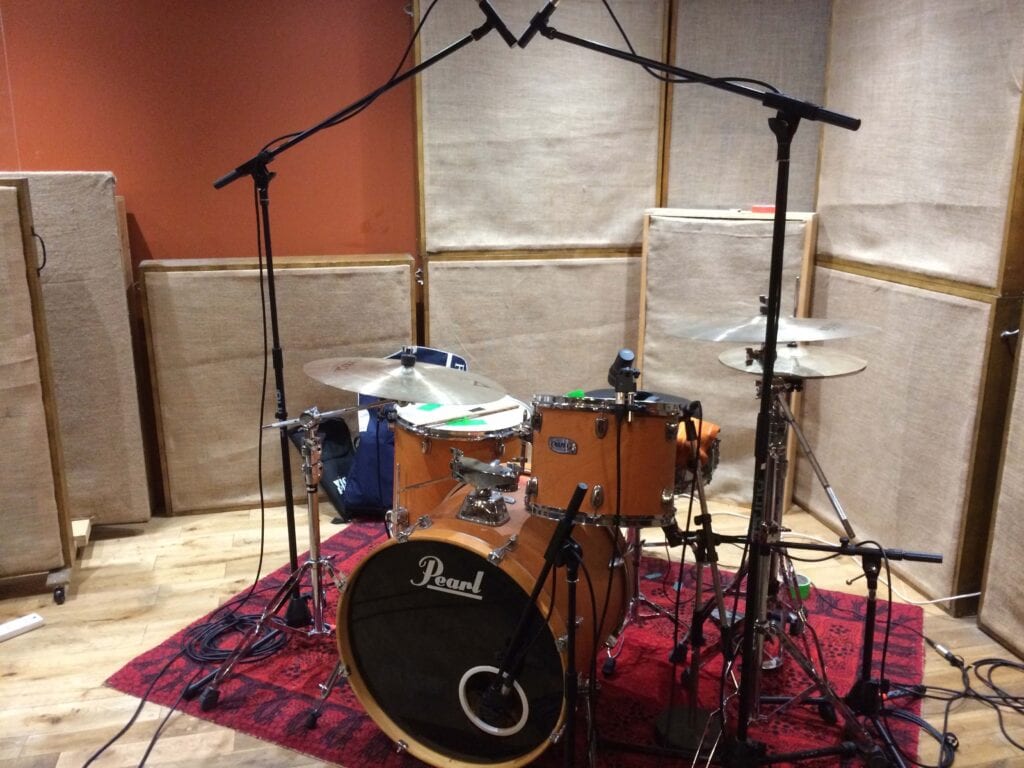
Even though the name V-Pack Arena suggests live sound, I wanted to try out the mics in a more controlled environment and specifically, get to grips with the V Kick. I was thankful that I did as, with a bit of time with no pressure, the V Kick did exactly what I hoped it would.
The voicings give you the choice of four sonic flavours in total. The left-hand switch controls the low-mids where you can change from a fairly flat response to a scooped sound, favoured for contemporary rock. The right-hand switch lets you shape the high frequencies, Classic gives you more upper-mid presence and Modern a clickier sound favoured by some extreme metal drummers.

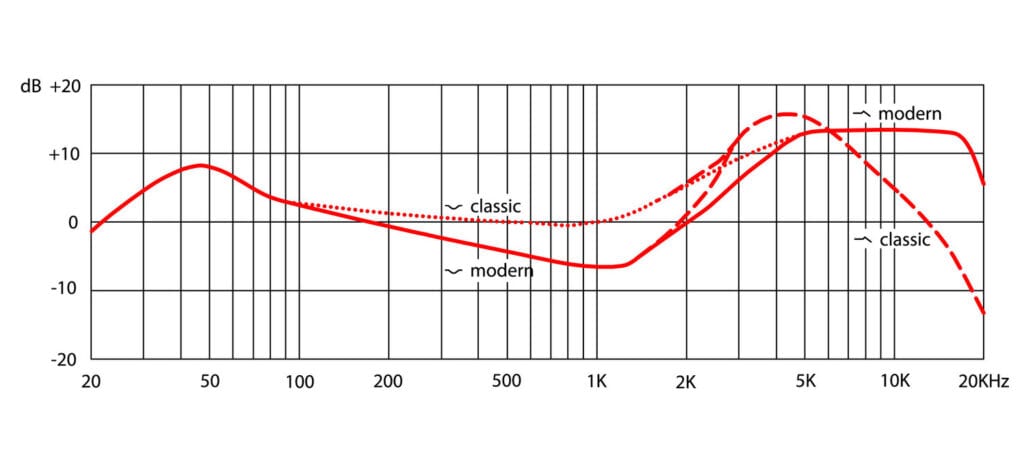
Combined, these different voices give the microphone extra range and choice of sonics dependent on what you are working on at the time. My personal favourite setting in the studio was Classic on the left switch and Modern on the right, which gave a nice forward sound in the mids without the low end overpowering the sound overall. That said, I could imagine these four choices working across a myriad of genres and giving the mic extra value. It conveys the low end solidly and there’s plenty of weight to the signal and the different voicings balance really well.
My one minor gripe is that, once the microphone is in position, the switches are either upside-down or very nearly and probably inside the kick drum. This doesn’t make them the easiest of things to adjust as you need a small screwdriver or key to move the switches at the same time as holding the mic and balancing upside down with your head on, or close to, the floor. I know, I know – a tiny gripe. But maybe the switches didn’t have to be recessed quite so much and a small surface-mounted switch would have done the job without impeding the swivel mount. But, as I said, minor compared to the benefits.

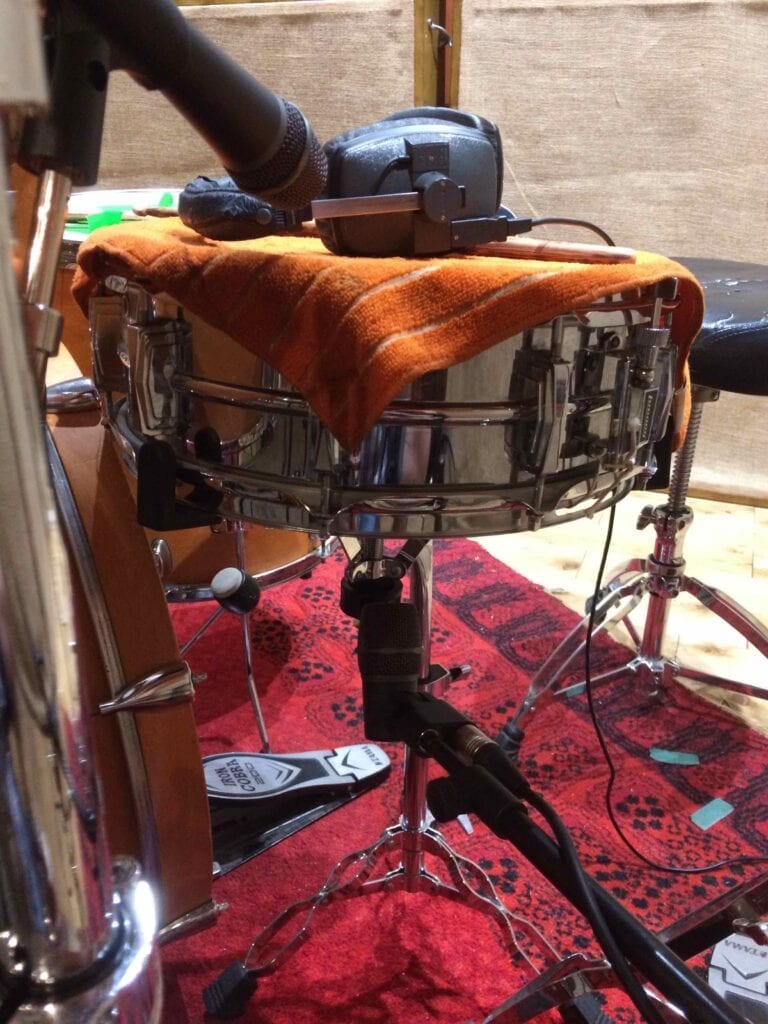
We set the kit with a single rack tom and the floor tom and I used the clip-on mountings for the V Beat rather than mic stands as I normally would in the studio. The clips did a grand job of decoupling impact and vibration noise from the shell and the tom sounds came through as they had done live. With the spare V Beat I tried it as an under snare mic and it turned in an unfussy job, capturing the snap of the snare wire without sounding too brittle. The sE8 was placed as an X/Y pair and once again sounded clean and clear as overheads, with a good stereo image.
Extra, extra

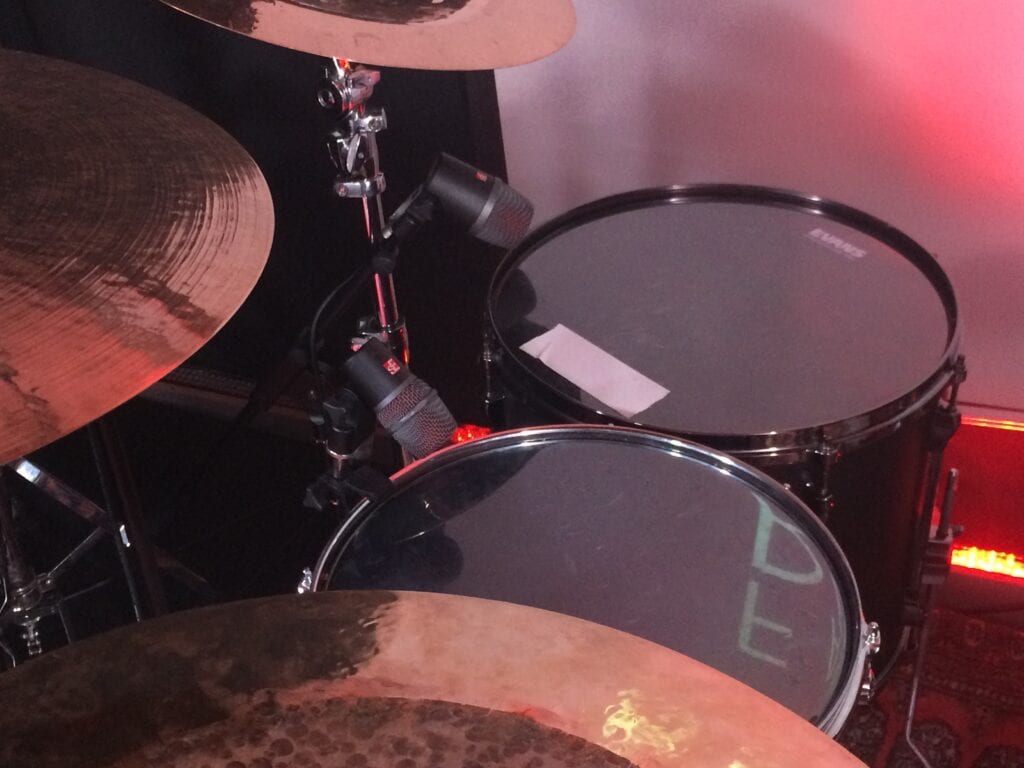
Just as with most mics, these can turn their hand to other jobs and I’ve had the V Kick on larger floor toms as well as bass cabs where they have worked with aplomb. The sE8 are quite discrete in size and can work in other roles such as acoustic guitar or piano, just as the V7X (and by default the V Beat) is an all-round instrument mic and does a great job, especially on guitar cabs, the polar pattern reducing spill from other close-by cabs and drums. To this end, you’re not just buying mics for a drum kit but a whole myriad of uses.

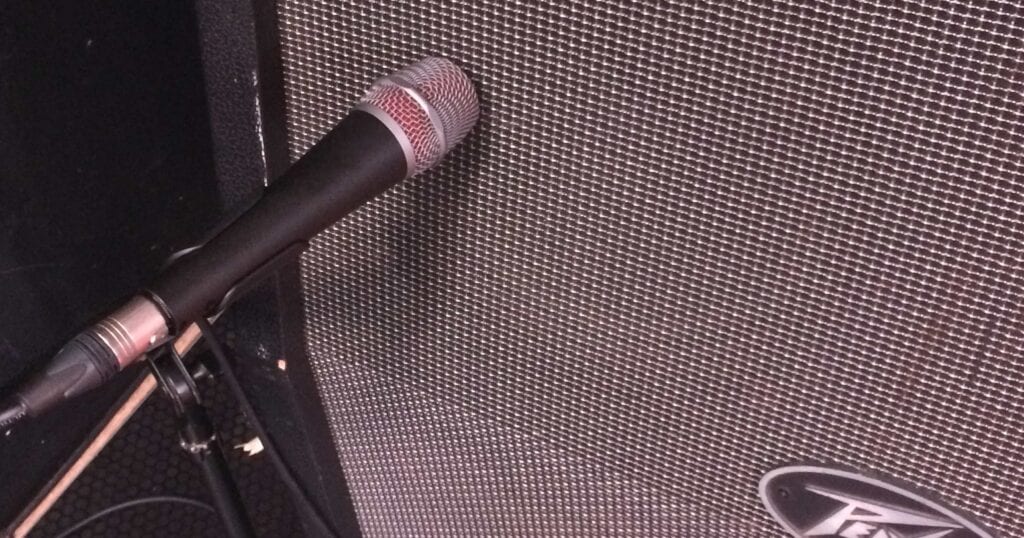
Conclusion
The V Pack Arena is a kit that can do a lot more than drums, even though it is tailored for that job. Whether live or in the studio, you have a range of options for use and individual settings on the actual mics themselves increase their usefulness. Be aware though that with the additional options, the V Kick may need a little more of your time to get acquainted with, so it would be ideal to try it out first in a non-pressurised situation. The build quality of all the mics is top-notch and coupled with clean sound quality, should survive the rigours of touring and studio work. This is a great set of microphones. Highly recommended.
In this video/audio demonstration you will first hear the four voicings of the V Kick with no other enhancement. They were all recorded using identical gain. Then you will hear the same four clips with additional EQ and compression using stock plugins in Logic Pro X. Finally, a mix of the whole kit, switching between dry recording and then processed using Logic plugins as before but with reverb and parallel compression added as well. As with any audio files for auditioning musical equipment and technology, you should listen on either good quality monitor speakers or headphones.



